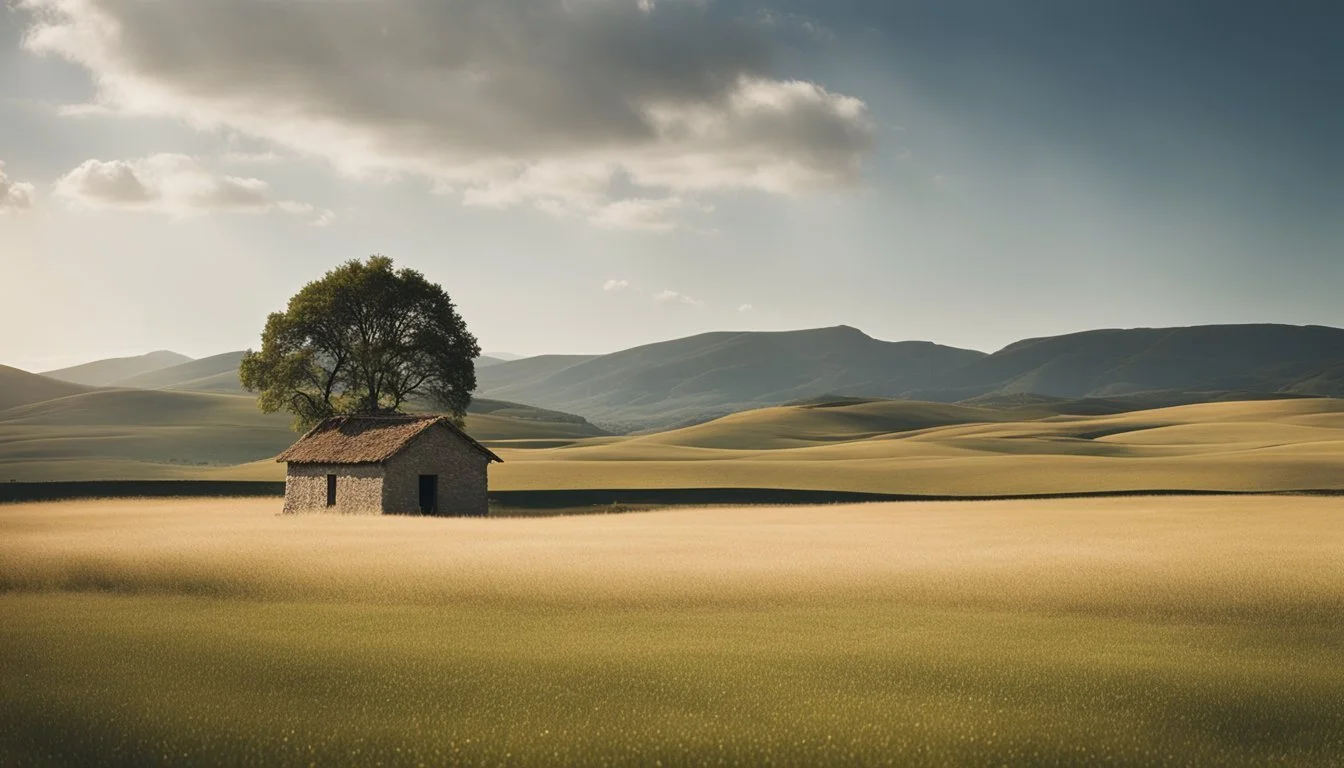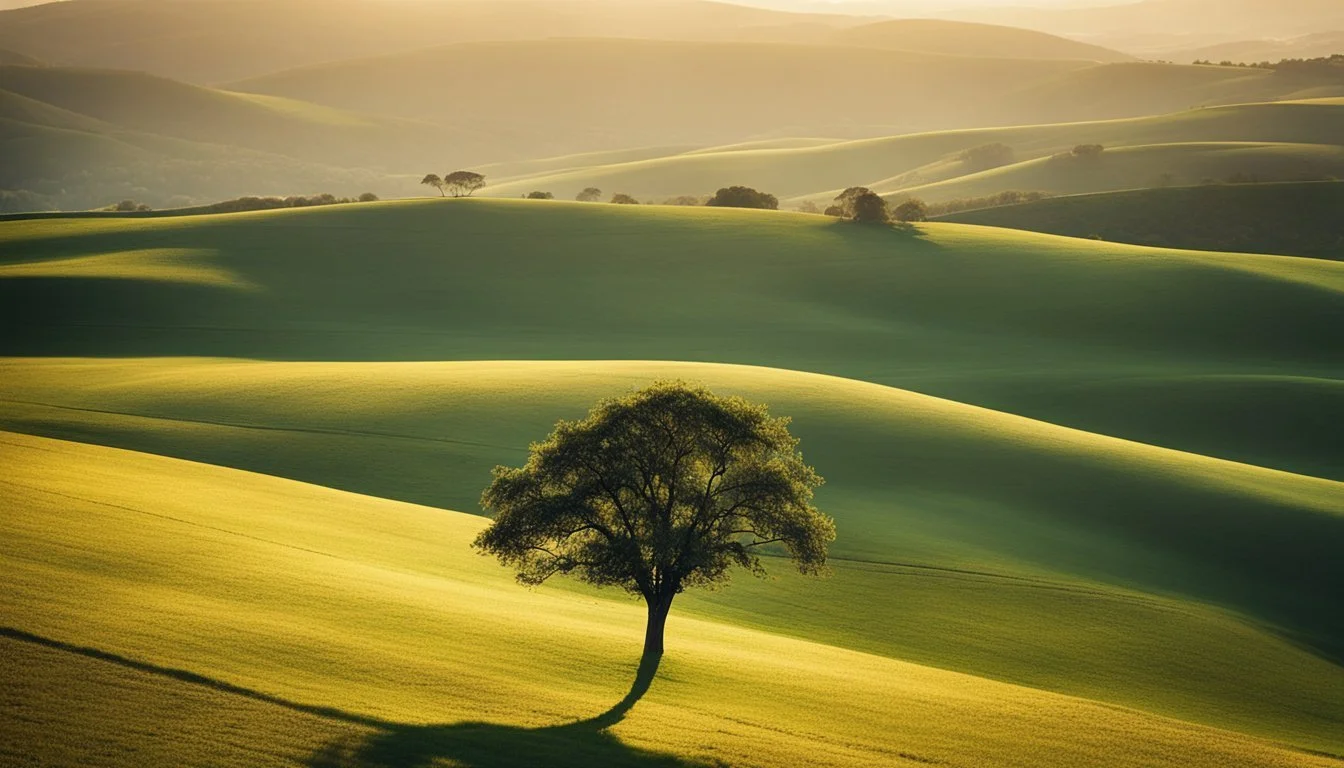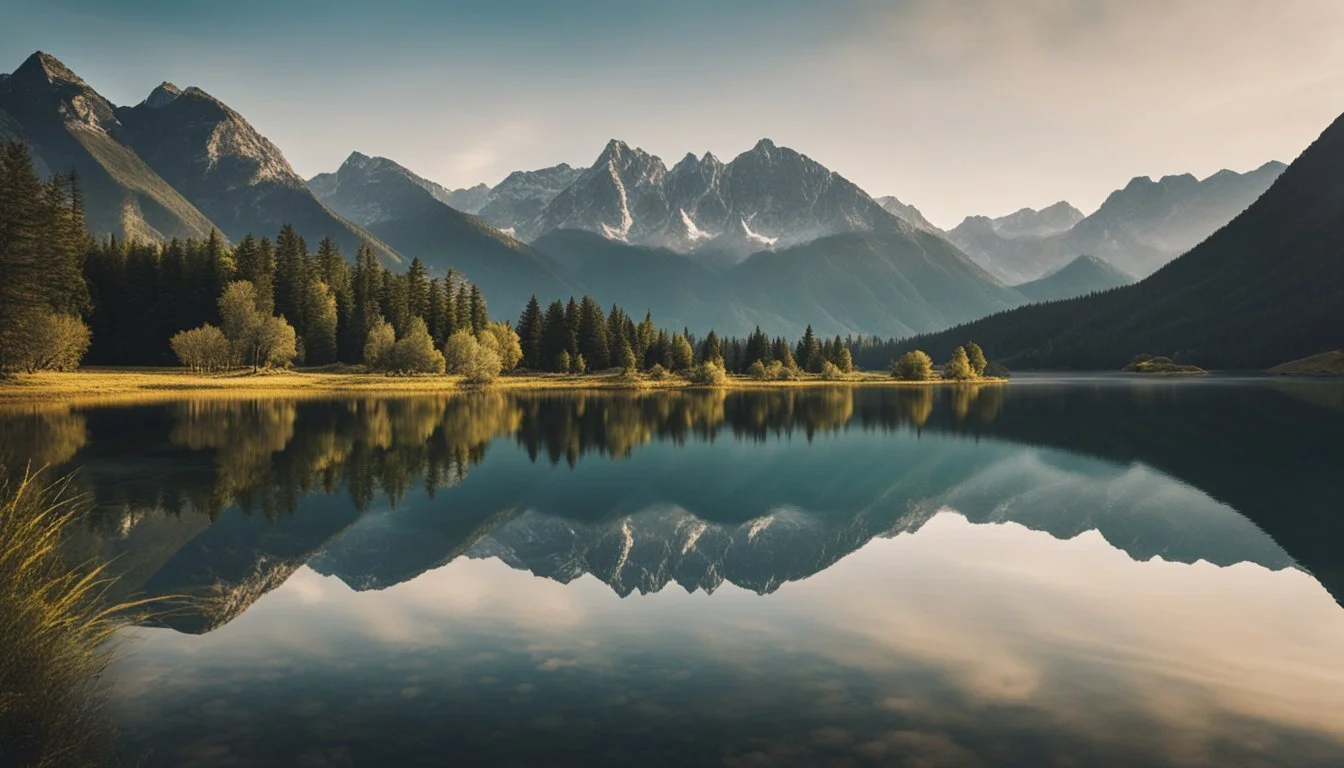James Benning: Capturing the Essence of Place and Time in Filmmaking
James Benning has spent decades defining the landscape of American independent cinema. Known for his rigorously structured films, Benning's work offers profound meditations on the relationship between the American landscape and its historical contexts. His ability to capture the essence of place and time with both grace and precision makes his films compelling studies in patience and observation.
Central to Benning's work is his unique approach to storytelling through visual and environmental elements, crafting narratives that often eschew traditional structures. His films, such as "The United States of America," created with Bette Gordon, highlight the vastness and diversity of America's landscapes, becoming historical artifacts in themselves. This meticulous attention to the environment not only serves as a backdrop but becomes a character of its own in his films.
Benning's influence extends beyond filmmaking into education, with his long-standing tenure at CalArts. His teachings continue to shape new generations of filmmakers, instilling in them the importance of structure, observation, and geographical history in cinema. His legacy is a testament to how independent cinema can evoke a deep connection to space and time, offering audiences a reflective and immersive experience.
The Filmmaking Philosophy of James Benning
James Benning's filmmaking is deeply rooted in minimalism, the meticulous exploration of time, and the unique treatment of place as a character. These elements create a distinctive cinematic experience that immerses viewers in the subtleties of the American landscape.
Minimalism and Duration
James Benning's approach to film is characterized by minimalism. His films often feature long, static shots that require viewers to engage deeply over extended periods. These shots are not merely decorative; they build a meditative rhythm. This technique provides space for viewers to observe and contemplate the details within each frame, transforming the ordinary into something profound. Benning's use of duration challenges conventional cinematic techniques, emphasizing patience and attentiveness.
The Exploration of Time in Film
Benning's films often explore the concept of time in a profound manner. Rather than adhering to traditional narrative structures, he focuses on capturing the passage of time itself. This technique encourages viewers to reflect on their own perception of time. By presenting real-time sequences, he creates a sense of temporality that parallels real life. His approach underlines the transient nature of moments and places, offering a meditative perspective rarely encountered in mainstream cinema.
Place as a Character
In Benning's work, place is as significant as any character. He meticulously captures the essence of different locations, often emphasizing their historical, social, and environmental contexts. His early films, like "11 x 14" and "One Way Boogie Woogie," document Midwestern landscapes with a keen eye for detail and authenticity. By doing so, he not only portrays the physicality of these places but also their inherent stories. This treatment elevates the setting from a mere backdrop to an active participant in the narrative, deeply engaging viewers with the environment.
Benning’s films reflect a profound commitment to capturing the essence of place and time through innovative cinematic techniques. This philosophical approach sets his work apart in the realm of independent cinema.
Signature Works
James Benning's significant contributions to independent cinema are exemplified through his focus on landscapes and nuanced exploration of time. His films capture both the beauty and the subtle social histories embedded within these environments.
Landscape Suicide and Deseret
Landscape Suicide (1987) delves into the minds of two infamous American murderers. Benning crafts a narrative by juxtaposing interviews and reenactments with serene midwestern landscapes. This contrast heightens the film's impact, juxtaposing human darkness with the calm of natural settings.
Deseret (1995) showcases Benning’s methodical approach to storytelling. He assembles historical photographs of Utah with text extracted from The New York Times. This contemplative film illustrates the transformation of the American West and its evolving identity.
El Valley Centro and Other California Landscapes
In El Valley Centro (2000), Benning documents the San Joaquin Valley with thirty-five stationary shots. Each shot is precisely 2 ½ minutes long, totaling 90 minutes. This technique immerses the audience in the visual and rhythmic qualities of the landscape, creating a meditative experience.
Los (2001) extends this approach to the greater Los Angeles area. Benning again employs static long-takes, capturing both the natural environment and urban sprawl, offering a comprehensive visual essay of California's diverse geography.
Thirteen Lakes and Ten Skies
Thirteen Lakes (2004) is an evocative study of thirteen lakes across the United States. Each lake is depicted in a single, ten-minute shot. The focus on water bodies emphasizes their serenity and grandeur, drawing viewers into a deep contemplation of nature.
Ten Skies (2004) complements this by focusing on the sky. Benning films ten different skies for ten minutes each. This minimalist approach directs attention to the subtleties of light, cloud formation, and atmospheric changes, offering a tranquil yet powerful viewing experience.
Through these works, Benning enforces the idea that landscapes are not mere backdrops but active participants in storytelling. His films encourage viewers to engage deeply with time and place, highlighting the profound connection between the environment and its history.
Benning’s Cinematic Technique
James Benning’s films are defined by their meticulously structured aesthetics and deep engagement with the American landscape. He uses specific technical choices to enhance the storytelling and evoke contemplation from the viewer.
The Role of Sound and Silence
Benning employs sound and silence to create a unique auditory experience. His films often feature ambient sounds—rustling leaves, distant industrial hum, or birdsong—that situate the viewer within the scene.
Silences are intentionally placed, allowing the visuals to dominate and granting space for reflection. This interplay of sound and silence contributes to the meditative quality of his work.
Static Framing and Composition
A hallmark of Benning’s technique is his use of static framing. He often employs long, uninterrupted shots, which require the viewer's patience and attention. These static images are carefully composed, capturing the essence of a location over extended periods.
His compositions often make use of natural and built environments, structuring them into visually compelling frames. Through this method, Benning transforms mundane scenes into profound visual statements.
The Use of 16mm Film
Benning’s choice of 16mm film is crucial to his technique. This medium offers a distinct texture and grain that digital lacks, providing a tactile sense to his visual storytelling. The 16mm format aligns with his commitment to capturing the authentic essence of his subjects.
Additionally, the manual nature of 16mm filmmaking demands a deliberate and thoughtful approach to both shooting and editing, reflecting Benning’s meticulous style.
Influence and Collaboration
James Benning's work is deeply rooted in the influences of various artists and his extensive teaching experiences. These factors have shaped his unique style and approach to capturing the essence of place and time.
Influences on Benning’s Work
James Benning draws inspiration from the American landscape, both its natural beauty and human impact.
His structured and contemplative films reflect influences from avant-garde and minimalist art movements. Films by European directors like Chantal Akerman and Michelangelo Antonioni also resonate in his work, emphasizing long takes and environmental sounds.
Additionally, Benning acknowledges the impact of photography on his cinematic techniques, reinforcing his profound connection to stillness and movement within landscapes.
Collaborative Projects and Teaching
Benning's role as an educator has been pivotal in shaping his collaborative ethos.
At institutions such as CalArts, he has mentored numerous filmmakers, integrating his experiences and methods into their learning.
He has also collaborated with artists from various mediums, creating mixed-media installations that combine film, painting, and other art forms.
His project "PLACE" is a notable example, merging video, letterpress books, and paintings into a cohesive narrative influenced by his travels and interactions with different localities.
Critical Reception and Interpretation
James Benning's works have been analyzed both academically and critically, showcasing his ability to capture the essence of place and time. This section will explore these perspectives, emphasizing his innovative style and thematic depth.
Academic Perspectives
Academics often highlight Benning's rigorous approach to filmmaking. His dedication to the fixed-frame and long-take techniques is frequently discussed. These methods allow him to explore the complexities of landscape and time, making his films subjects of study in universities.
Researchers emphasize how Benning's work challenges traditional narrative structures, focusing instead on environmental and sociopolitical themes. His films often serve as visual essays, prompting critical discourse on how we perceive and interact with our surroundings.
Public and Critical Reception
Benning's films have garnered attention for their meditative and immersive qualities. Critics praise his meticulous attention to detail and ability to transform mundane settings into profound visual experiences. Critic-reviews describe his work as a blend of documentary and experimental filmmaking, highlighting the authenticity he brings to his subjects.
Despite a niche audience, Benning's films have a devoted following. They commend his unconventional storytelling and environmental consciousness. Public appreciation focuses on his unique cinematic vision, making his work a topic of conversation among film enthusiasts and critics alike.
Benning’s Impact on Film and Art
James Benning has profoundly influenced the landscape of American independent film through his distinctive visual style and philosophical approach to capturing the world. His work transcends traditional cinema, affecting both contemporary filmmakers and the broader art community.
Influence on Contemporary Filmmakers
Benning’s innovative techniques, such as his use of static long takes and minimalist aesthetics, have reshaped the narrative structure and visual presentation in independent cinema. His early films like 11 x 14 and One Way Boogie Woogie introduced new ways of looking at time and space, inspiring directors to explore cinematic forms beyond conventional storytelling.
A notable example is his film BNSF (2013), which uses static shots to capture the essence of American landscapes, challenging filmmakers to reconsider how they depict environmental and social themes. Directors like Kelly Reichardt and Chantal Akerman have drawn inspiration from Benning’s methodical and immersive style, pushing the boundaries of how stories are told.
Benning’s commitment to exploring the relationship between nature and technology, as seen in his exhibitions and films, has also influenced visual artists. His work encourages an interdisciplinary approach, blending film, photography, and digital media into a cohesive narrative exploration. Benning serves as a pivotal figure, bridging the gap between traditional filmmaking and contemporary art practices.
Themes of Environmentalism
James Benning's work frequently explores the interplay between the natural world and human activities, highlighting ecological concerns and the consequences of human intervention on landscapes.
Depiction of Ecological Issues
James Benning's films often portray the beauty and fragility of the natural environment. Through his meticulous compositions and extended shots, he draws attention to the subtle yet significant changes occurring in nature.
Films like 13 Lakes and Ten Skies serve as meditative reflections on water and sky, emphasizing their importance in ecological balance. These works invite viewers to contemplate the state of these essential natural resources. Benning encourages a deeper awareness of environmental issues by showcasing untouched and disturbed landscapes.
Human Impact on the Landscape
Benning also addresses the profound impact of human activity on the environment. His films, such as RR and Deseret, depict industrialization, urban sprawl, and land use change, documenting how these activities alter the natural world.
RR focuses on the presence of railroads in the American landscape, illustrating both their historical significance and their environmental footprint. Deseret chronicles the transformation of Utah's landscapes, revealing the environmental and social consequences of settlement and development.
Benning's storytelling merges visual aesthetics with ecological commentary, prompting viewers to reflect on their relationship with the environment and consider the long-term effects of human endeavors.
Archiving and Preservation
Preserving James Benning's films, especially those shot on 16mm, presents unique challenges. Modern digital restoration efforts are crucial in ensuring the longevity and accessibility of his work.
Challenges in Preserving 16mm Films
16mm films are susceptible to various forms of decay. Color fading and vinegar syndrome are common issues. Vinegar syndrome occurs when acetate film base deteriorates, emitting a vinegar-like smell and potentially causing irreversible damage. Additionally, physical wear and tear from handling and projection can also degrade the film.
Proper storage conditions are crucial. Films need to be kept in a humidity-controlled environment with low temperatures to slow down the aging process. Archivists often face the difficulty of finding adequate storage facilities that meet these requirements. Furthermore, financial constraints frequently limit the ability to maintain large film collections.
Digital Restoration Initiatives
Digitizing Benning's films is an essential method for preservation. Digital restoration involves scanning the original 16mm films into a high-resolution format. This process allows for the correction of color balance, removal of scratches, and repair of other damages that have occurred over time.
Once digitized, these films are not only more accessible but can be duplicated easily, ensuring copies are available if the original deteriorates. Institutions like the UCLA Film & Television Archive are actively involved in these digital restoration projects, offering specialized equipment and expertise. Digital platforms also offer a wider audience reach, making Benning's meticulously crafted visual narratives available to contemporary viewers worldwide.







